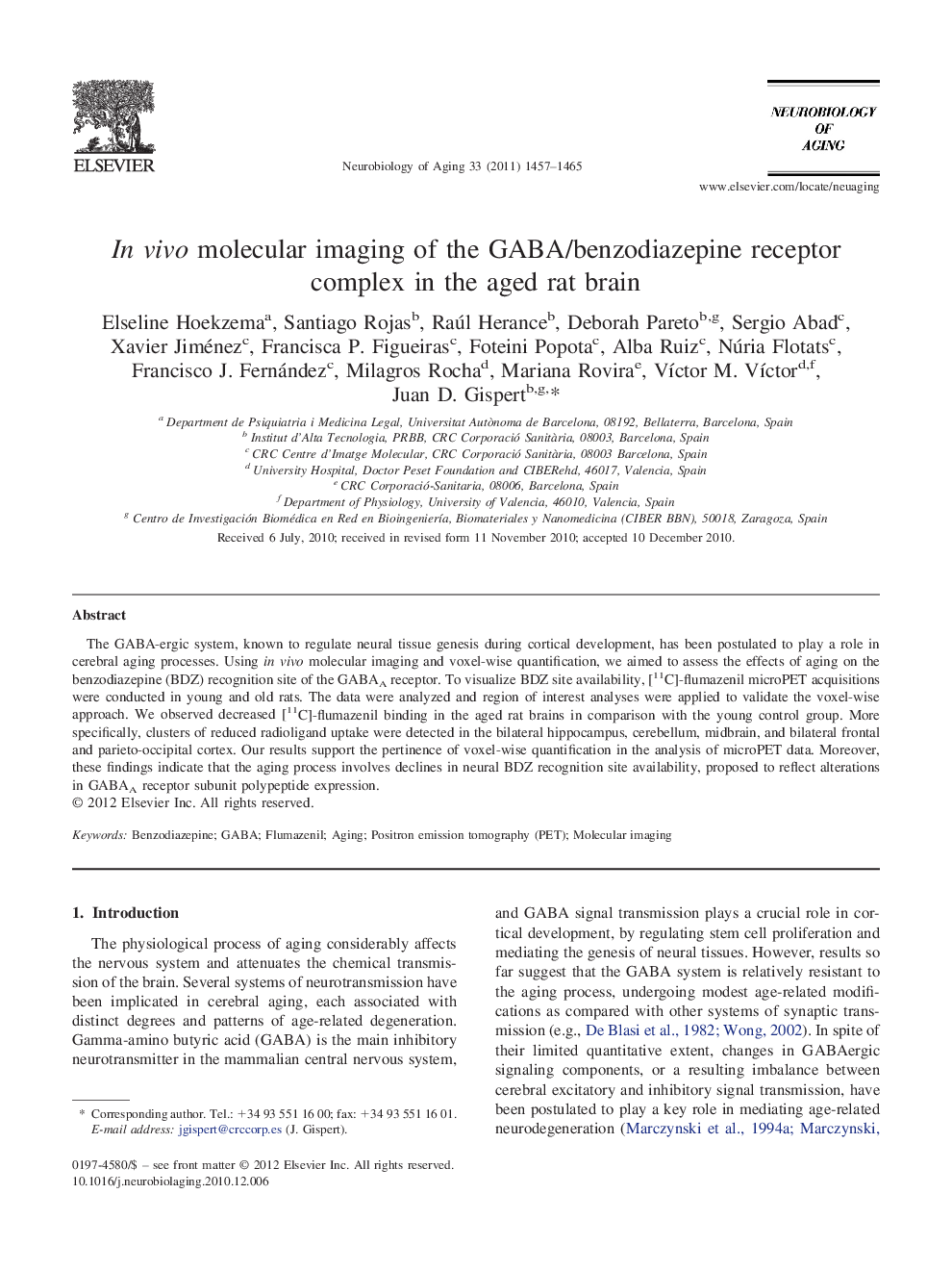| Article ID | Journal | Published Year | Pages | File Type |
|---|---|---|---|---|
| 6808908 | Neurobiology of Aging | 2012 | 9 Pages |
Abstract
The GABA-ergic system, known to regulate neural tissue genesis during cortical development, has been postulated to play a role in cerebral aging processes. Using in vivo molecular imaging and voxel-wise quantification, we aimed to assess the effects of aging on the benzodiazepine (BDZ) recognition site of the GABAA receptor. To visualize BDZ site availability, [11C]-flumazenil microPET acquisitions were conducted in young and old rats. The data were analyzed and region of interest analyses were applied to validate the voxel-wise approach. We observed decreased [11C]-flumazenil binding in the aged rat brains in comparison with the young control group. More specifically, clusters of reduced radioligand uptake were detected in the bilateral hippocampus, cerebellum, midbrain, and bilateral frontal and parieto-occipital cortex. Our results support the pertinence of voxel-wise quantification in the analysis of microPET data. Moreover, these findings indicate that the aging process involves declines in neural BDZ recognition site availability, proposed to reflect alterations in GABAA receptor subunit polypeptide expression.
Related Topics
Life Sciences
Biochemistry, Genetics and Molecular Biology
Ageing
Authors
Elseline Hoekzema, Santiago Rojas, Raúl Herance, Deborah Pareto, Sergio Abad, Xavier Jiménez, Francisca P. Figueiras, Foteini Popota, Alba Ruiz, Núria Flotats, Francisco J. Fernández, Milagros Rocha, Mariana Rovira, VÃctor M. VÃctor,
